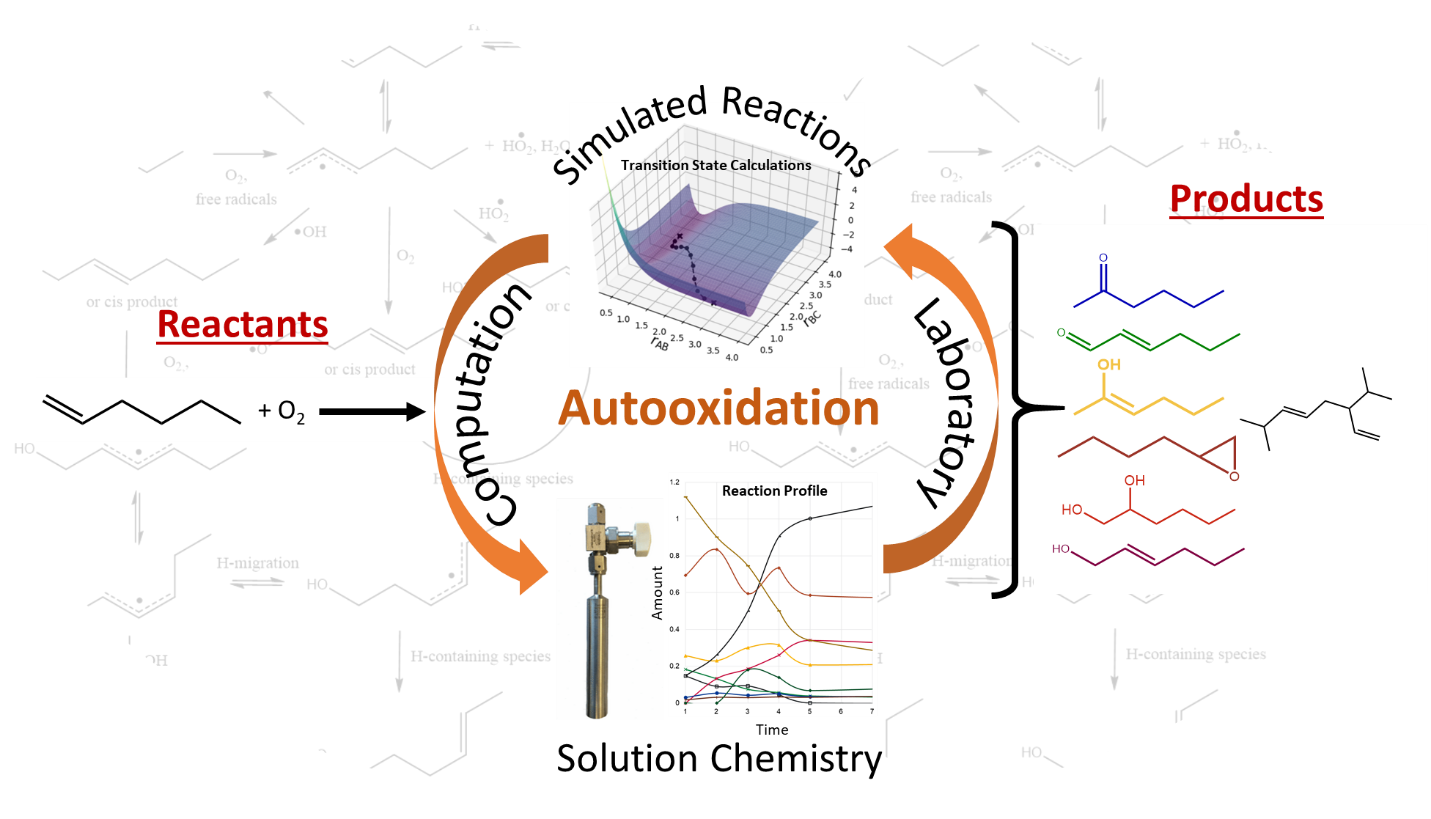CDI Project: Elucidation of the Reaction Mechanisms of Autooxidative Processes in Complex Condensed-Phase Mixtures

Return to Nuclear Incident Characterization Use Case
PI: Tim Bays
Project Team: Amity Anderson, John Linehan, Cynthia Warner, Jon Egbert
Project Term: May 2019 to September 2021
Key Science Questions:
- To what extent can the combination of theory and experiment be used to model and predict the free radical oxidation of an olefin in the condensed phase, with and without a gas-liquid interface?
- Can data analytics tools be used to extend this fundamental understanding to similar systems, i.e., other olefins, presence or absence of radical initiators/scavengers, or differences in reaction conditions?
Project Description: The goal of this project is to develop a mechanistic understanding of autooxidation processes in non-equilibrium biphasic systems represented by a condensed, complex organic phase, and gaseous interface. This understanding will yield kinetic and thermodynamic insights, an understanding of detailed mechanistic pathways, and provide predictive product distributions representative of those occurring as a result of autooxidation.
Initially, this work is focusing on radical-promoted addition reactions in complex chemical mixtures in the condensed phase, with and without a gaseous interface for the transfer of oxygen, or other chemical species. The addition reactions—both observed and predicted—are expected to be representative of gum forming reactions occurring in liquid hydrocarbon mixtures over time.